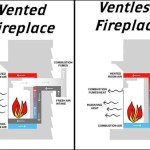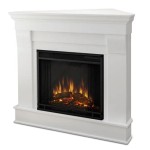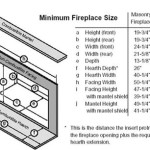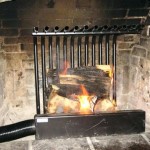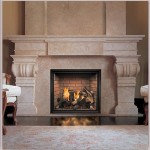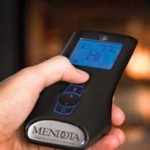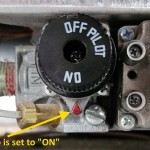```html
Fireplace Back Panel Ideas: Enhancing Aesthetics and Functionality
The fireplace, historically a necessity for heating, has evolved into a focal point in many homes, offering both warmth and aesthetic appeal. A crucial element in the overall appearance and functionality of a fireplace is the back panel. This panel, situated at the back of the firebox, serves several purposes, including reflecting heat, protecting the surrounding wall from damage, and contributing significantly to the fireplace's visual style. Selecting the appropriate back panel requires careful consideration of factors such as material, design, and compatibility with the existing fireplace structure.
The back panel's function extends beyond mere aesthetics. It acts as a thermal barrier, preventing excessive heat from radiating directly into the wall behind the fireplace. This protective function is particularly important for fireplaces surrounded by combustible materials like wood framing. A well-chosen back panel can prolong the lifespan of the fireplace structure and reduce the risk of fire hazards. Furthermore, reflective surfaces on the panel can enhance the radiant heat output of the fireplace, making it a more efficient heating source.
The design possibilities for fireplace back panels are extensive, ranging from traditional to contemporary styles. The selection process should prioritize a design that complements the overall décor of the room and enhances the fireplace's visual presence. Careful consideration of color, texture, and pattern is essential for achieving a harmonious and visually appealing outcome.
Material Options for Fireplace Back Panels
The choice of material is a primary consideration when selecting a fireplace back panel. Different materials offer varying degrees of heat resistance, durability, and aesthetic appeal. Understanding the properties of each material is crucial for making an informed decision.
Brick: Brick is a classic and widely used material for fireplace back panels. It offers excellent heat resistance and a traditional, rustic aesthetic. Brick panels can be constructed from new bricks or reclaimed bricks, each offering a distinct visual character. The use of reclaimed bricks can add a sense of history and authenticity to the fireplace. Brick panels are generally durable and require minimal maintenance.
Stone: Stone back panels offer a natural and elegant look. Various types of stone, such as slate, granite, and marble, can be used, each with its unique color and texture. Stone is durable and heat-resistant, making it a suitable choice for fireplaces. However, stone panels can be more expensive than brick or other materials. The installation process may also require specialized skills and equipment.
Tile: Tile offers a versatile and customizable option for fireplace back panels. Tiles are available in a wide range of colors, patterns, and materials, including ceramic, porcelain, and glass. Tile panels can be designed to create intricate patterns or simple, minimalist designs. While tile is generally heat-resistant, it's important to select tiles specifically designed for fireplace applications. The grout lines between tiles may require periodic cleaning and maintenance.
Metal: Metal back panels, such as steel or cast iron, offer a modern and industrial aesthetic. Metal is highly heat-resistant and durable. Some metal panels are designed with embossed patterns or textures to enhance their visual appeal. Metal panels can also be coated with heat-resistant paint or powder coating to prevent rust and corrosion. However, bare metal panels can become extremely hot during fireplace operation and pose a burn risk.
Glass: Glass back panels can create a sleek and contemporary look. Tempered glass is specifically designed to withstand high temperatures and is a suitable option for fireplace applications. Glass panels can be clear, tinted, or mirrored, offering different visual effects. Mirrored glass panels can enhance the perceived size of the room and reflect light, creating a brighter and more inviting atmosphere. However, glass panels require regular cleaning to maintain their appearance.
Design Considerations for Fireplace Back Panels
Beyond the choice of material, the design of the back panel plays a significant role in the overall aesthetic of the fireplace. The design should complement the style of the room and enhance the fireplace's visual appeal. Factors such as color, pattern, texture, and layout should be carefully considered.
Color: The color of the back panel should harmonize with the surrounding décor. Neutral colors, such as white, gray, and beige, are versatile and can complement a wide range of styles. Bold colors can be used to create a focal point or add visual interest to the room. The color should also consider the fireplace's primary function. Darker colors tend to absorb heat, while lighter colors reflect it.
Pattern: The pattern of the back panel can add visual texture and interest. Simple, geometric patterns can create a modern and minimalist look, while intricate patterns can add a touch of elegance and sophistication. The size and scale of the pattern should be appropriate for the size of the fireplace and the room. Overly busy patterns can be overwhelming, while overly simple patterns may lack visual impact.
Texture: The texture of the back panel can add depth and dimension to the fireplace. Rough textures, such as natural stone or brick, can create a rustic and natural look. Smooth textures, such as glass or polished metal, can create a modern and sophisticated look. The texture should be chosen to complement the overall style of the room and the fireplace.
Layout: The layout of the back panel can also affect the overall aesthetic. A simple, flat panel can create a clean and minimalist look, while a panel with a raised design or recessed niches can add visual interest and functionality. The layout should be carefully planned to ensure that it is aesthetically pleasing and functional.
Integration with Fireplace Surround: The back panel design should be integrated with the surrounding fireplace surround. The back panel and surround should complement each other in terms of color, style, and material. A harmonious integration will create a cohesive and visually appealing fireplace design.
Installation and Maintenance of Fireplace Back Panels
Proper installation and maintenance are crucial for ensuring the safety and longevity of the fireplace back panel. The installation process should be carried out by a qualified professional to ensure that the panel is properly secured and that all safety regulations are met. Regular maintenance, such as cleaning and inspection, can help to prevent damage and extend the lifespan of the panel.
Installation: The installation process will vary depending on the type of back panel and the existing fireplace structure. Generally, the process involves preparing the surface, applying adhesive or mortar, and securing the panel in place. It's crucial to follow the manufacturer's instructions carefully and to use appropriate tools and materials. For masonry back panels, a proper foundation is essential for supporting the weight of the panel. Metal panels often require specialized fasteners and anchoring systems.
Cleaning: Regular cleaning is essential for removing soot, dust, and other debris from the back panel. The cleaning method will depend on the material of the panel. Brick and stone panels can be cleaned with a mild detergent and water. Tile panels can be cleaned with a tile cleaner. Glass panels can be cleaned with a glass cleaner. Metal panels may require specialized cleaning products to prevent rust and corrosion. A soft brush or cloth should be used to avoid scratching the surface.
Inspection: Regular inspection of the back panel can help to identify and address potential problems before they become serious. Look for cracks, chips, or other signs of damage. Check the mortar joints for signs of deterioration. Ensure that the panel is securely attached to the fireplace structure. If any problems are detected, they should be addressed promptly to prevent further damage.
Safety Considerations: Safety is paramount when dealing with fireplaces and back panels. Always follow all safety regulations and guidelines. Ensure that the fireplace is properly ventilated. Never leave a fire unattended. Keep flammable materials away from the fireplace. Install a carbon monoxide detector in the home. Consult with a qualified professional for any questions or concerns about fireplace safety.
Ultimately, the selection and installation of a fireplace back panel is a multi-faceted process requiring careful consideration of material, design, and safety. When executed properly, the back panel enhances the aesthetic appeal and structural integrity of the fireplace, increasing both the value and enjoyment of the home.
```
Fireplace Back Panel Ideas Tips 2024 Checkatrade

Fireplace Back Panel Ideas Tips 2024 Checkatrade

Fireplace Back Panel Ideas Tips 2024 Checkatrade

Diy Fireplace Makeover Wood Slat

Fireplace Back Panel Ideas Tips 2024 Checkatrade

Fireplace Back Panel Ideas Tips 2024 Checkatrade

20 Ideas To Decorate Around A Wood Burning Stove

Fireplace Chamber Lining Panels Brick Bond Solutions

50 Fireplace Ideas To Give Your Room That Special Spark

Fireplace Tiles Ideas And Patterns Rubi Blog Usa
Related Posts


